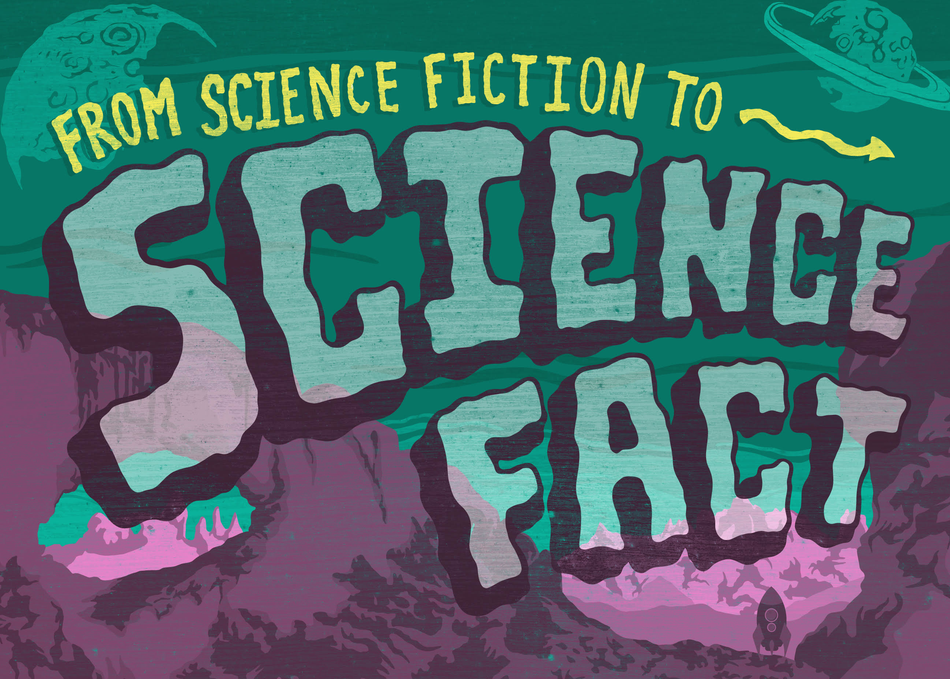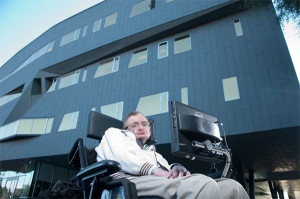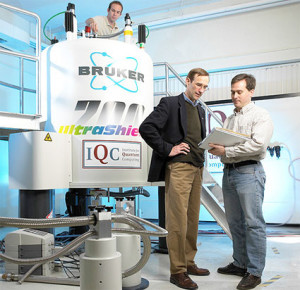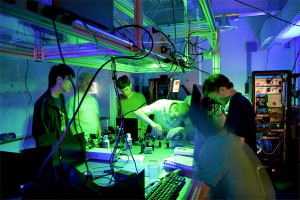I recently published [March 20, 2018] a piece on ‘smart cities’ both an art/science event in Toronto and a Canadian government initiative without mentioning the necessity of new technology to support all of the grand plans. On that note, it seems the Canadian federal government and two provincial (Québec and Ontario) governments are prepared to invest in one of the necessary ‘new’ technologies, 5G wireless. The Canadian Broadcasting Corporation’s (CBC) Shawn Benjamin reports about Canada’s 5G plans in suitably breathless (even in text only) tones of excitement in a March 19, 2018 article,
The federal, Ontario and Quebec governments say they will spend $200 million to help fund research into 5G wireless technology, the next-generation networks with download speeds 100 times faster than current ones can handle.
The so-called “5G corridor,” known as ENCQOR, will see tech companies such as Ericsson, Ciena Canada, Thales Canada, IBM and CGI kick in another $200 million to develop facilities to get the project up and running.
The idea is to set up a network of linked research facilities and laboratories that these companies — and as many as 1,000 more across Canada — will be able to use to test products and services that run on 5G networks.
Benjamin’s description of 5G is focused on what it will make possible in the future,
If you think things are moving too fast, buckle up, because a new 5G cellular network is just around the corner and it promises to transform our lives by connecting nearly everything to a new, much faster, reliable wireless network.
The first networks won’t be operational for at least a few years, but technology and telecom companies around the world are already planning to spend billions to make sure they aren’t left behind, says Lawrence Surtees, a communications analyst with the research firm IDC.
The new 5G is no tentative baby step toward the future. Rather, as Surtees puts it, “the move from 4G to 5G is a quantum leap.”
…
In a downtown Toronto soundstage, Alan Smithson recently demonstrated a few virtual reality and augmented reality projects that his company MetaVRse is working on.
The potential for VR and AR technology is endless, he said, in large part for its potential to help hurdle some of the walls we are already seeing with current networks.
Virtual Reality technology on the market today is continually increasing things like frame rates and screen resolutions in a constant quest to make their devices even more lifelike.
…
… They [current 4G networks] can’t handle the load. But 5G can do so easily, Smithson said, so much so that the current era of bulky augmented reality headsets could be replaced buy a pair of normal looking glasses.
…
In a 5G world, those internet-connected glasses will automatically recognize everyone you meet, and possibly be able to overlay their name in your field of vision, along with a link to their online profile. …
Benjamin also mentions ‘smart cities’,
In a University of Toronto laboratory, Professor Alberto Leon-Garcia researches connected vehicles and smart power grids. “My passion right now is enabling smart cities — making smart cities a reality — and that means having much more immediate and detailed sense of the environment,” he said.
Faster 5G networks will assist his projects in many ways, by giving planners more, instant data on things like traffic patterns, energy consumption, variou carbon footprints and much more.
…
Leon-Garcia points to a brightly lit map of Toronto [image embedded in Benjamin’s article] in his office, and explains that every dot of light represents a sensor transmitting real time data.
Currently, the network is hooked up to things like city buses, traffic cameras and the city-owned fleet of shared bicycles. He currently has thousands of data points feeding him info on his map, but in a 5G world, the network will support about a million sensors per square kilometre.
…
Very exciting but where is all this data going? What computers will be processing the information? Where are these sensors located? Benjamin does not venture into those waters nor does The Economist in a February 13, 2018 article about 5G, the Olympic Games in Pyeonchang, South Korea, but the magazine does note another barrier to 5G implementation,
“FASTER, higher, stronger,” goes the Olympic motto. So it is only appropriate that the next generation of wireless technology, “5G” for short, should get its first showcase at the Winter Olympics under way in Pyeongchang, South Korea. Once fully developed, it is supposed to offer download speeds of at least 20 gigabits per second (4G manages about half that at best) and response times (“latency”) of below 1 millisecond. So the new networks will be able to transfer a high-resolution movie in two seconds and respond to requests in less than a hundredth of the time it takes to blink an eye. But 5G is not just about faster and swifter wireless connections.
The technology is meant to enable all sorts of new services. One such would offer virtual- or augmented-reality experiences. At the Olympics, for example, many contestants are being followed by 360-degree video cameras. At special venues sports fans can don virtual-reality goggles to put themselves right into the action. But 5G is also supposed to become the connective tissue for the internet of things, to link anything from smartphones to wireless sensors and industrial robots to self-driving cars. This will be made possible by a technique called “network slicing”, which allows operators quickly to create bespoke networks that give each set of devices exactly the connectivity they need.
…
Despite its versatility, it is not clear how quickly 5G will take off. The biggest brake will be economic. [emphasis mine] When the GSMA, an industry group, last year asked 750 telecoms bosses about the most salient impediment to delivering 5G, more than half cited the lack of a clear business case. People may want more bandwidth, but they are not willing to pay for it—an attitude even the lure of the fanciest virtual-reality applications may not change. …
That may not be the only brake, Dexter Johnson in a March 19, 2018 posting on his Nanoclast blog (on the IEEE [Institute of Electrical and Electronics Engineers] website), covers some of the others (Note: Links have been removed),
Graphene has been heralded as a “wonder material” for well over a decade now, and 5G has been marketed as the next big thing for at least the past five years. Analysts have suggested that 5G could be the golden ticket to virtual reality and artificial intelligence, and promised that graphene could improve technologies within electronics and optoelectronics.
But proponents of both graphene and 5G have also been accused of stirring up hype. There now seems to be a rising sense within industry circles that these glowing technological prospects will not come anytime soon.
At Mobile World Congress (MWC) in Barcelona last month [February 2018], some misgivings for these long promised technologies may have been put to rest, though, thanks in large part to each other.
…
In a meeting at MWC with Jari Kinaret, a professor at Chalmers University in Sweden and director of the Graphene Flagship, I took a guided tour around the Pavilion to see some of the technologies poised to have an impact on the development of 5G.
Being invited back to the MWC for three years is a pretty clear indication of how important graphene is to those who are trying to raise the fortunes of 5G. But just how important became more obvious to me in an interview with Frank Koppens, the leader of the quantum nano-optoelectronic group at Institute of Photonic Sciences (ICFO) just outside of Barcelona, last year.
He said: “5G cannot just scale. Some new technology is needed. And that’s why we have several companies in the Graphene Flagship that are putting a lot of pressure on us to address this issue.”
…
In a collaboration led by CNIT—a consortium of Italian universities and national laboratories focused on communication technologies—researchers from AMO GmbH, Ericsson, Nokia Bell Labs, and Imec have developed graphene-based photodetectors and modulators capable of receiving and transmitting optical data faster than ever before.
The aim of all this speed for transmitting data is to support the ultrafast data streams with extreme bandwidth that will be part of 5G. In fact, at another section during MWC, Ericsson was presenting the switching of a 100 Gigabits per second (Gbps) channel based on the technology.
“The fact that Ericsson is demonstrating another version of this technology demonstrates that from Ericsson’s point of view, this is no longer just research” said Kinaret.
It’s no mystery why the big mobile companies are jumping on this technology. Not only does it provide high-speed data transmission, but it also does it 10 times more efficiently than silicon or doped silicon devices, and will eventually do it more cheaply than those devices, according to Vito Sorianello, senior researcher at CNIT.
…
Interestingly, Ericsson is one of the tech companies mentioned with regard to Canada’s 5G project, ENCQOR and Sweden’s Chalmers University, as Dexter Johnson notes, is the lead institution for the Graphene Flagship.. One other fact to note, Canada’s resources include graphite mines with ‘premium’ flakes for producing graphene. Canada’s graphite mines are located (as far as I know) in only two Canadian provinces, Ontario and Québec, which also happen to be pitching money into ENCQOR. My March 21, 2018 posting describes the latest entry into the Canadian graphite mining stakes.
As for the questions I posed about processing power, etc. It seems the South Koreans have found answers of some kind but it’s hard to evaluate as I haven’t found any additional information about 5G and its implementation in South Korea. If anyone has answers, please feel free to leave them in the ‘comments’. Thank you.




 History has repeatedly demonstrated the power of research in physics to transform society. As a student of history and a believer in the power of physics, Mike Lazaridis set out in 2000 to make real his bold vision to establish the Region of Waterloo as a world leading centre for physics research. That is, a place where the best researchers in the world would come to do cutting-edge research and to collaborate with each other and in so doing, achieve transformative discoveries that would lead to the commercialization of breakthrough technologies.
History has repeatedly demonstrated the power of research in physics to transform society. As a student of history and a believer in the power of physics, Mike Lazaridis set out in 2000 to make real his bold vision to establish the Region of Waterloo as a world leading centre for physics research. That is, a place where the best researchers in the world would come to do cutting-edge research and to collaborate with each other and in so doing, achieve transformative discoveries that would lead to the commercialization of breakthrough technologies. Perimeter is located in a Governor-General award winning designed building in Waterloo. Success in recruiting and resulting space requirements led to an expansion of the Perimeter facility. A uniquely designed addition, which has been described as space-ship-like, was opened in 2011 as the
Perimeter is located in a Governor-General award winning designed building in Waterloo. Success in recruiting and resulting space requirements led to an expansion of the Perimeter facility. A uniquely designed addition, which has been described as space-ship-like, was opened in 2011 as the  Mike and Doug Fregin have been close friends since grade 5. They are also co-founders of BlackBerry (formerly Research In Motion Limited). Doug shares Mike’s passion for physics and supported Mike’s efforts at the Perimeter Institute with an initial gift of $10 million. Since that time Doug has donated a total of $30 million to Perimeter Institute. Separately, Doug helped establish the
Mike and Doug Fregin have been close friends since grade 5. They are also co-founders of BlackBerry (formerly Research In Motion Limited). Doug shares Mike’s passion for physics and supported Mike’s efforts at the Perimeter Institute with an initial gift of $10 million. Since that time Doug has donated a total of $30 million to Perimeter Institute. Separately, Doug helped establish the  For many years, theorists have been able to demonstrate the transformative powers of quantum mechanics on paper. That said, converting these theories to experimentally demonstrable discoveries has, putting it mildly, been a challenge. Many naysayers have suggested that achieving these discoveries was not possible and even the believers suggested that it could likely take decades to achieve these discoveries. Recently, a buzz has been developing globally as experimentalists have been able to achieve demonstrable success with respect to Quantum Information based discoveries. Local experimentalists are very much playing a leading role in this regard. It is believed by many that breakthrough discoveries that will lead to commercialization opportunities may be achieved in the next few years and certainly within the next decade.
For many years, theorists have been able to demonstrate the transformative powers of quantum mechanics on paper. That said, converting these theories to experimentally demonstrable discoveries has, putting it mildly, been a challenge. Many naysayers have suggested that achieving these discoveries was not possible and even the believers suggested that it could likely take decades to achieve these discoveries. Recently, a buzz has been developing globally as experimentalists have been able to achieve demonstrable success with respect to Quantum Information based discoveries. Local experimentalists are very much playing a leading role in this regard. It is believed by many that breakthrough discoveries that will lead to commercialization opportunities may be achieved in the next few years and certainly within the next decade.
